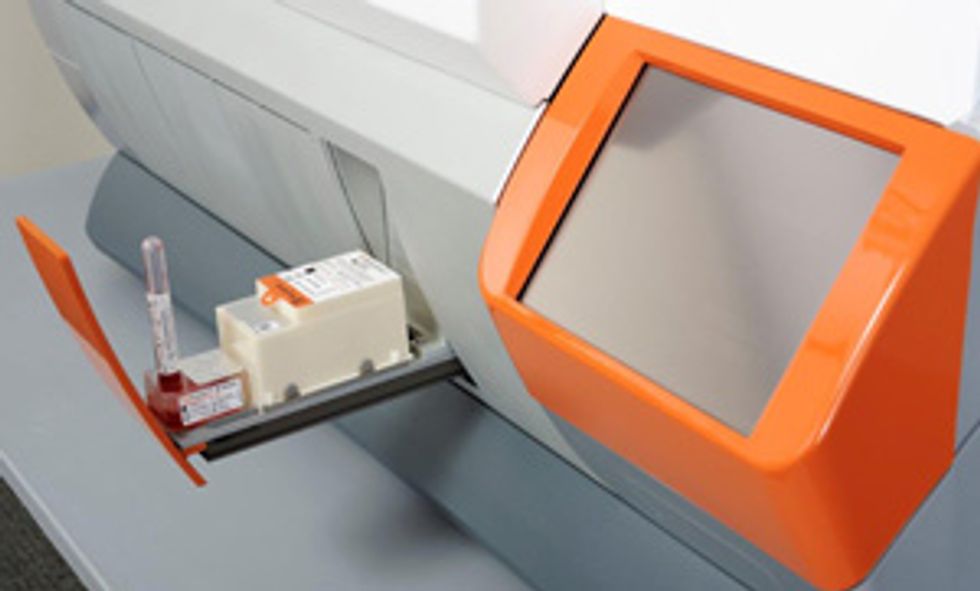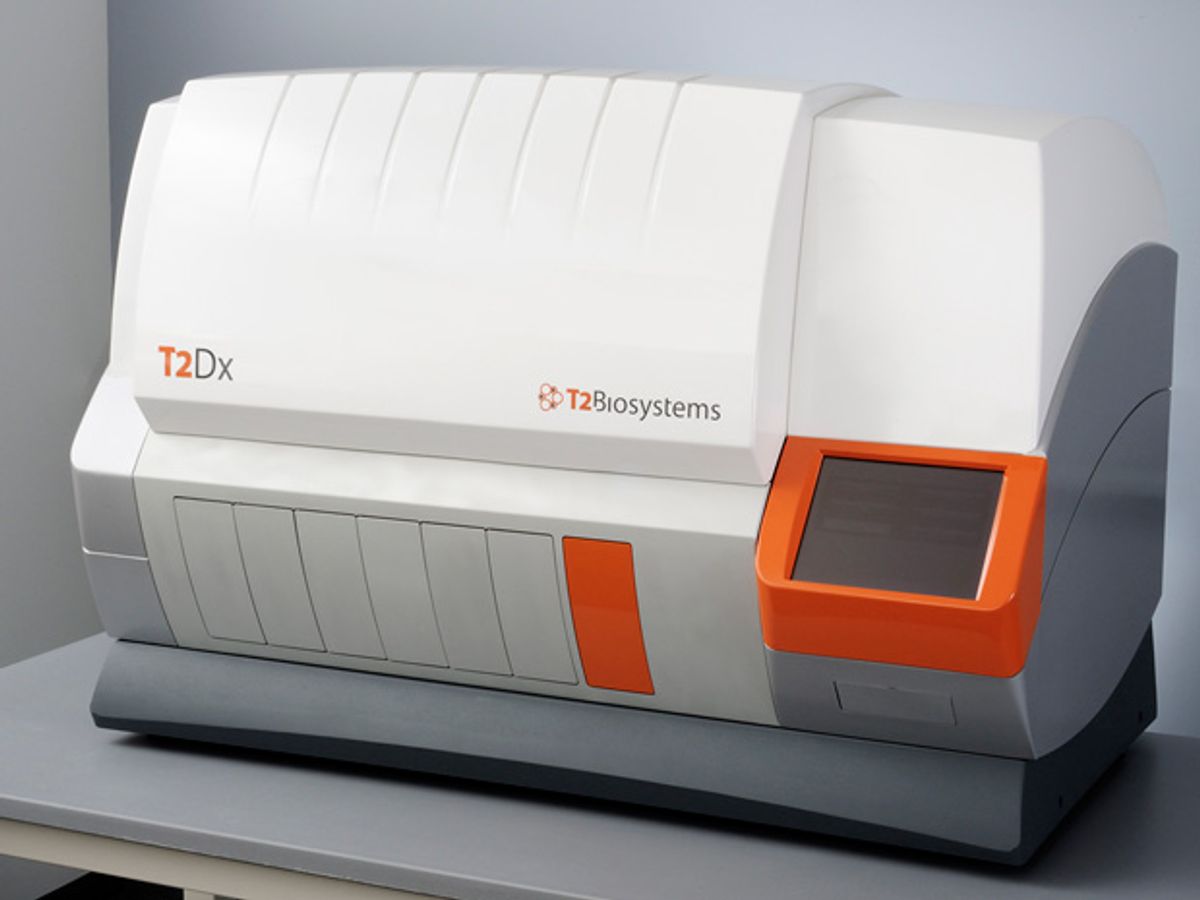When a patient is brought to an emergency room with a virulent fever, the body shutting down from infection, doctors can make only an educated guess on treatment. Blood culture tests to determine the pathogen take days. Until the results are in, patients are pumped with antibiotics and antifungals that may or may not fight the disease.
T2 Biosystems
Founded: 2006
Headquarters: Lexington, Mass.
Founders: Michael Cima, Tyler Jacks, Lee Josephson, Robert Langer, W. David Lee, and Ralph Weissleder
Funding: US $150 million
Employees: 75
T2 Biosystems in Lexington, Mass., plans to change that with a printer-size device that can identify microbes in 3 to 5 hours. The company’s initial system can identify five strains of candida, a fungus that’s a leading cause of sepsis-induced death. With an exact diagnosis in hand, doctors can prescribe the best possible drug regimen. Such precise treatment within 12 hours can reduce the mortality rate from 40 percent to 11 percent, says T2’s CEO, John McDonough. Treating patients with the right antifungals immediately would also save hospitals US $30,000 per patient, he says. For those who test negative for candida, ruling out the infection would save thousands of dollars more by preventing the use of unnecessary drugs.
In a trial that involved over 1,500 patients at seven hospitals, the device correctly identified 91 percent of the people who had a candida infection. This led to the U.S. Food and Drug Administration’s taking just three months—record time for a new technology—to approve T2’s instrument and candida test.
The company is now developing a test to spot common sepsis-causing bacteria. It’s also developing a 20-minute test to help doctors detect faulty hemostasis—the process that coagulates blood to stop bleeding—in trauma patients. In theory, the technology can identify cancer-indicating proteins, hormones—pretty much anything with DNA. It isn’t a stretch to imagine a device like this being used in the fight against epidemics like Ebola, says Michael Cima, a materials science and engineering professor at MIT, one of the cofounders of the company.

Cima and five other researchers from MIT and Harvard Medical School came up with the technology when they were putting together an unrelated cancer research proposal in 2006. Cima and Ralph Weissleder, a professor of systems biology at Harvard Medical School, had been working on sensors that allowed smaller and simpler versions of the nuclear-magnetic-resonance systems used in magnetic resonance imaging.
The founders devised a technique that combines their mini-NMR sensors with magnetic nanoparticles. The iron-oxide nanoparticles are coated with molecules that bind to a specific target, such as a protein’s or a pathogen’s unique DNA. If the target molecule is present in a test sample, the nanoparticles cluster around it, which causes a detectable change in the sample’s magnetic response.
T2 started as a company with a technology looking for an application. McDonough, who took over the CEO helm in 2007, was the one who identified the unmet need for rapid candida diagnostics. With FDA approval in its pocket, the company is now gearing up its sales force, and McDonough wants to get the first few machines into hospitals early this year.
So far, T2 has raised $150 million between private equity financing and its August IPO. Dan Leonard, an analyst with investment bank Leerink Partners, says the company has “novel technology with very good market potential.” He estimates that the company can generate revenue of $3.4 million in 2015, going up to $36.5 million in 2016 and $111 million in 2017.
According to Cornelius Clancy, an associate professor of medicine at the University of Pittsburgh division of infectious diseases who was involved in T2’s clinical trials, the new technology will complement traditional blood culture diagnostics, not replace them (traditional cultures let you grow the pathogen for further study, for example). While the bean counters at his hospital system will ultimately decide whether to invest in the instrument, he says, T2 Biosystems has come up with a “new diagnostic paradigm for infectious diseases.”
This article originally appeared in print as “T2 Biosystems.”
